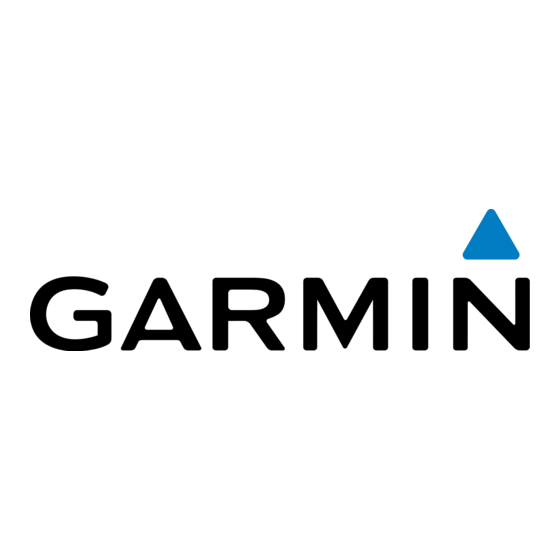Garmin nuvi 1690 Instrukcja bezpieczeństwa i gwarancji - Strona 2
Przeglądaj online lub pobierz pdf Instrukcja bezpieczeństwa i gwarancji dla System nawigacji samochodowej Garmin nuvi 1690. Garmin nuvi 1690 9 stron. Important safety and product information
Również dla Garmin nuvi 1690: Skrócona instrukcja obsługi (13 strony), Bezpieczeństwo i informacje o produkcie (36 strony), Skrócona instrukcja obsługi (20 strony)

Warning: This product, its packaging, and
its components contain chemicals known to
the State of California to cause cancer, birth
defects, or reproductive harm. This notice
is provided in accordance with California's
Proposition 65. See
for more information.
Battery Warnings
If these guidelines are not followed, the internal
lithium-ion battery may experience a shortened
life span or may present a risk of damage to
the GPS device, fire, chemical burn, electrolyte
leak, and/or injury.
•
Do not leave the device exposed to a heat
source or in a high temperature location, such
as in the sun in an unattended vehicle. To
prevent damage, remove the device from the
vehicle or store it out of direct sunlight, such
as in the glove box.
•
Do not puncture or incinerate.
•
When storing the device for an extended time,
store within the following temperature range:
from 32° to 77°F (from 0° to 25°C).
•
Do not operate the device outside of the
following temperature range: from -4° to
131°F (from -20° to 55°C).
•
Do not remove or attempt to remove the non-
user-replaceable battery.
www.garmin.com/prop65
•
When disposing of the device, take it to
a professional service, such as a waste
electronics treatment facility, to have the
battery removed and recycled.
Important Information
The California Electronic Waste recycling
act of 2003 requires the recycling of certain
electronics. For more information on the
applicability to this product, see
www.erecycle.org.
Map Data inForMation: One of the
goals of Garmin is to provide customers with
the most complete and accurate cartography
that is available to us at a reasonable cost. We
use a combination of governmental and private
data sources, which we identify in product
literature and copyright messages displayed
to the consumer. Virtually all data sources
contain some inaccurate or incomplete data.
In some countries, complete and accurate
map information is either not available or is
prohibitively expensive.
2
